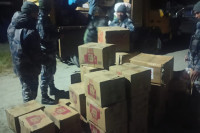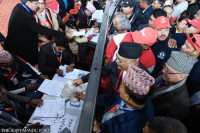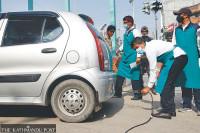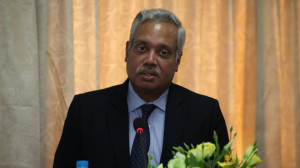National
Kaligandaki corridor road gives new hope to isolated mountain communities
The 445-kilometre road from Mustang to Nawalpur connects remote mountain villages to markets, healthcare, and tourism and is transforming lives.
Madhav Aryal
Six years ago, Karma Angyal Gurung, a 67-year-old man from ward 1 of Lomanthang Rural Municipality in the mountain district of Mustang, had to walk for six days to reach Pokhara. He used to visit Pokhara, now the provincial headquarters of Gandaki Province, with his parents, carrying medicinal herbs and other local products. Things have changed.
“Traveling then was quite difficult and time-consuming. Nowadays, one can reach Pokhara within a day. Vehicles arrived in Jomsom first. They now reach up to Korala,” said Karma. This is all possible thanks to the construction of the north-south Kaligandaki corridor road.
The road now stretches from Pokhara to Jomsom and up to the Korala border with China, and this has made travel much easier for residents like Pema Angyal Gurung of Lomanthang. Previously, it took up to a week of trekking to reach urban trade centers. Now, heavy trucks deliver goods to remote villages, and tourists can visit locations that were once virtually inaccessible.
Spanning 445 kilometers, the Kaligandaki Corridor starts in Nawalpur and winds through Palpa, Gulmi, Baglung, Parbat, Myagdi and Mustang. Recognised as a National Pride Project, it has brought road access to some of Nepal’s most remote regions. The road, following the banks of the Kaligandaki river, connects the Himalayas to the Tarai, linking previously isolated communities to major markets and services.
Locals have already felt the impact. In Baglung’s Jaimini Municipality, 68-year-old Chandreshwar Dhungana recalls walking for days just to reach the district headquarters. “It took about two to reach the district headquarters. Now we can travel to Butwal and return the same day,” said Dhungana. The hardship of carrying essentials like salt from Butwal on a weeklong journey is now just a memory.
With much of the corridor now open, road upgrades are ongoing. Approximately 250 kilometers are already blacktopped, and most other sections are gravel roads. This has not only improved travel but also enabled residents to access education, health services, and agricultural markets more easily.
Harikala Neupane, a resident of Arbeni village in Gulmi, says vegetable farming and dairy production have increased in the area due to easier access to markets. “The road construction has improved the lives of villagers,” she added. According to her, locals now have easy access to health institutions with the opening of the Kaligandaki corridor road.
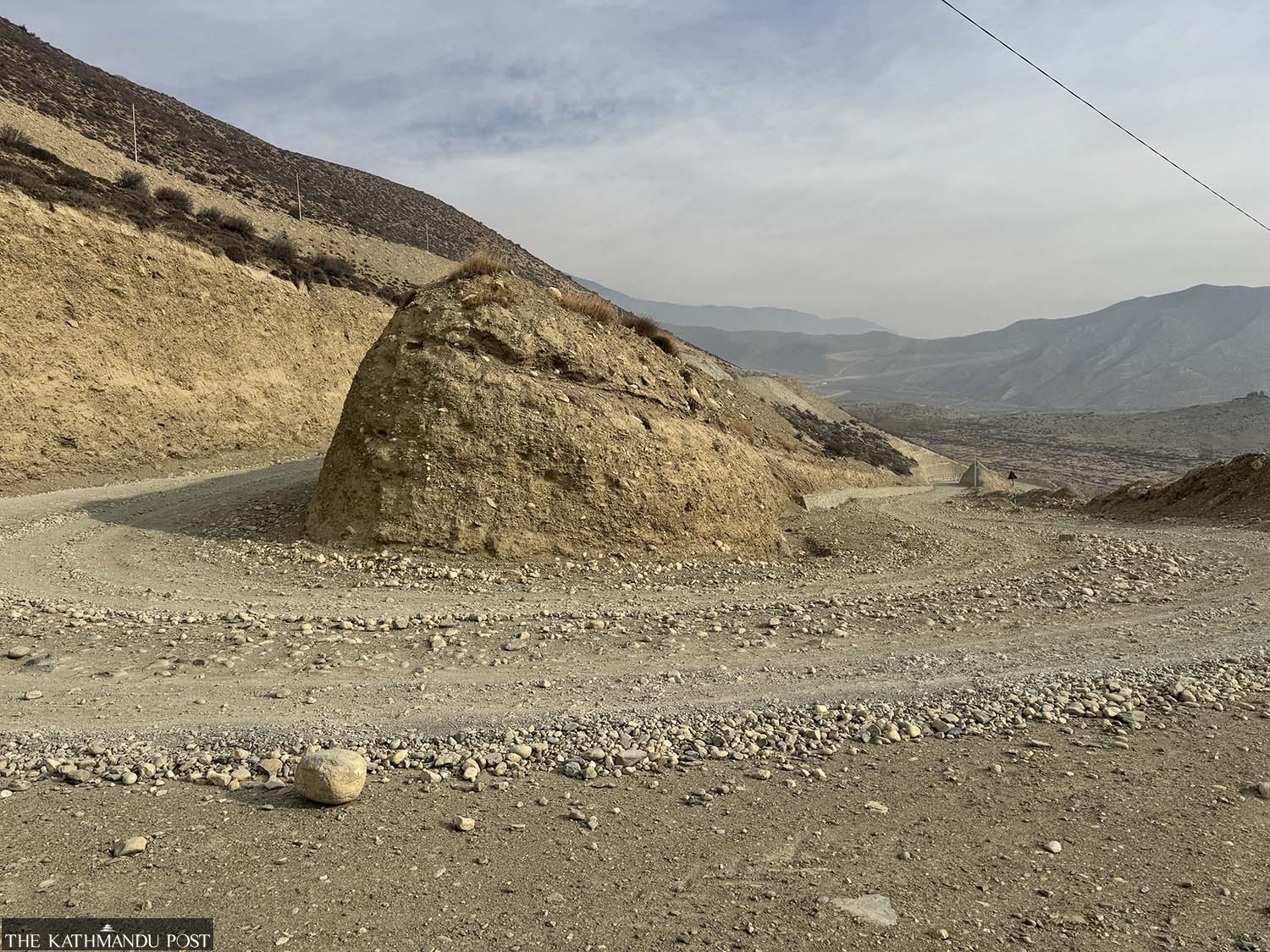
Shanti Thapa Taramu, a female community health volunteer in Satyawati Rural Municipality in Gulmi, recalls the days when expecting mothers had to be carried for hours to reach the Palpa Mission Hospital. Now, the same journey takes only a few hours.
The corridor has become a lifeline for remote settlements, and it has led to the establishment of new market centers along the route. From Gaidakot in Nawalpur district to Korala in Mustang, the corridor has helped integrate remote villages into the national economy. Religious and tourist destinations along the way have also seen a surge in visitors, including Indian tourists.
Construction of the road began in 2007, and in 2010 it was included among Nepal’s National Pride Projects, with the goal of completion within five years. Managed by the Department of Roads, the project is divided into two segments: the southern section (Gaidakot-Ramdi-Maldhunga) and the northern section (Maldhunga-Jomsom-Korala).
By improving connectivity, the corridor has directly benefited over two million people across six districts of Lumbini and Gandaki provinces. In eastern Nawalpur, areas like Bulingtar and Dedhgaun are now linked to Gaidakot, while villages such as Argali in Tansen Municipality have seen increased economic activity and tourism.
Mamata Shrestha of Dedhgaun in Nawalpur shares how it once took two days to reach Gaidakot. Now, the same trip takes just two hours. Her vegetables and dairy products can now reach markets up to Narayanghat in Chitwan, and this has significantly boosted her income. The number of hotels and transportation services has increased, and the corridor has sparked urban development in municipalities like Rampur.
The road follows ancient trade routes, including the ancient trade route from Tibet through Lomanthang and Muktinath to Lumbini via Beni and Ridi. Once completed, it is expected to benefit more than one million rural people, facilitate mineral and agricultural industries, and enhance regional connectivity.
According to Raman Bahadur Thapa, mayor of Rampur Municipality in Palpa, the corridor road will support agricultural development in the area. “Farmers are now encouraged to grow crops because of easier access to markets after the construction of the Kaligandaki corridor road. The road will also be helpful in setting up agro-based and mineral-based industries,” said Thapa. According to him, the Kaligandaki corridor is more than a road—it is a transformative force for Nepal’s rural heartland, bridging the gap between remote communities and the national mainstream.




 15.12°C Kathmandu
15.12°C Kathmandu
